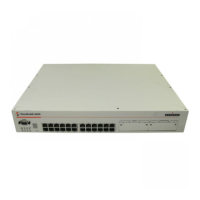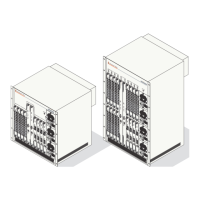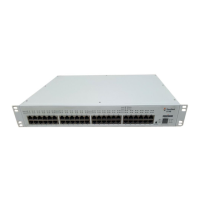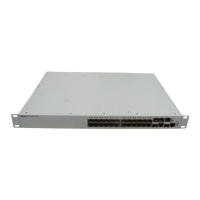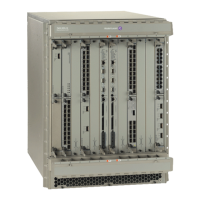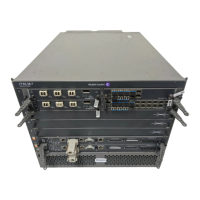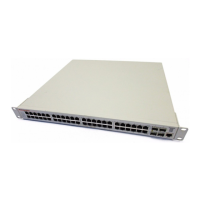
Do you have a question about the Alcatel OmniSwitch 6800 Series and is the answer not in the manual?
| Model | OmniSwitch 6800 Series |
|---|---|
| Form Factor | Rack-mountable |
| AC Power Input | 100-240VAC, 50/60Hz |
| Layer Support | L2/L3 |
| Management | Web-based, CLI, SNMP |
| Power Supply | Redundant (optional) |
| Routing Protocol | OSPF, BGP, RIP, VRRP |
| Operating Temperature | 32°F to 113°F (0°C to 45°C) |
| Storage Temperature | -40°C to 70°C (-40°F to 158°F) |
| Security Features | ACLs, 802.1X, RADIUS, TACACS+ |
| MAC Address Table Size | 64, 000 entries |
Lists the OmniSwitch 6800 Series models covered in this guide.
Identifies the target audience for this hardware users guide.
Outlines the hardware-related information covered within this user guide.
Provides a roadmap of the Alcatel documentation suite for switch configuration.
Explains Alcatel's technical support services and contact information.
Details the different OmniSwitch 6800 Series chassis models and their front panel components.
Explains the meaning of the status LEDs on the OmniSwitch 6800 Series front panels.
Describes the components found on the rear panel of the OmniSwitch 6800 Series switches.
Provides guidance on chassis airflow considerations and mounting the OmniSwitch 6800 Series.
Outlines the available installation methods: tabletop and rack-mount.
Guides users through configuring multiple switches into a single virtual chassis (stack).
Describes the console port, its default settings, and how to modify them for switch management.
Explains how to use CLI commands to monitor chassis status, temperature, and fan status.
Details the 10 Gigabit expansion module, its specifications, and installation.
Lists optional backup power supply components and installation procedures.
Provides an overview of OmniSwitch 6800 Series switches configured as a single virtual chassis (stack).
Defines the different roles assigned to switches within a stack, including primary, secondary, and idle.
Details the methods used to select the primary management module in a stack.
Outlines the methods for selecting the secondary management module in a stacked configuration.
Defines the role of idle modules and how they function within a stack.
Explains the pass-through mode, its causes, and how to resolve it.
Details connecting switches in a stack using cables and the importance of redundant connections.
Explains how switches are assigned unique slot numbers within a stack.
Discusses adding or removing modules from a stack without disrupting operations.
Explains the role of tokens in budgeting stack ASIC resources and managing modules.
Describes reloading switches in various states and the impact on stack roles.
Provides guidelines to prevent a stack from splitting during reloads.
Details the procedure for manually forcing the secondary module to assume the primary role.
Explains synchronizing software and configuration files across stack switches.
Lists CLI commands and visual methods for monitoring the status of a switch stack.
States compliance with EU directives, safety, and EMC standards.
Details FCC, Canada, JATE, CISPR22, VCCI, and Taiwan compliance requirements.
Provides safety warnings translated into multiple languages for various operational aspects.
Recommends reading safety information and outlines specific warnings like restricted access and wrist straps.
